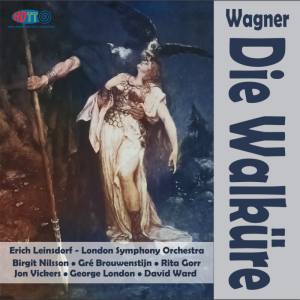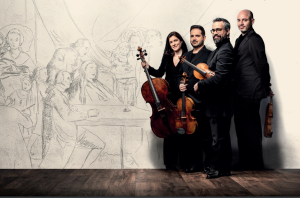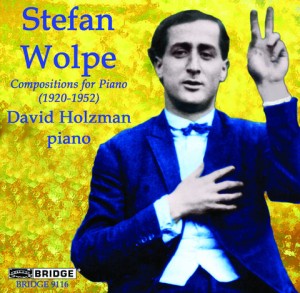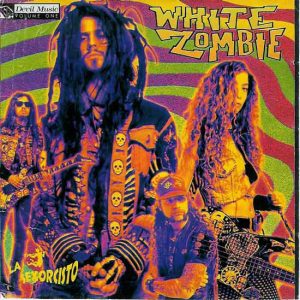High Definition Tape Transfers (HDTT) has released the great Erich Leinsdorf recording of Die Walküre—let there be celebrations in the streets! With the greatest cast ever assembled, and led by a great Wagner conductor, this recording should have been the start of a full Ring Cycle for RCA. Unfortunately, it was not. By the time this was released, Decca was moving well along on it's Ring Cycle with Solti, rights to the tapes reverted back to Decca, and Decca was busy promoting the Solti recordings (which are wonderful, but lack the excellence of casting in the last to be recorded, Die Walküre, as found in this Leinsdorf recording).
Wagner Die Walküre, Erich Leinsdorf, Birgit Nilsson, Jon Vickers, George London, David Ward, Rita Gorr, Gré Brouwenstijn, London Symphony Orchestra. 1961, 2023 (DXD, DSD256) HERE
Erich Leinsdorf was a very well respected Wagnerian of long standing. At the time of this recording in 1961, he was already under contract to lead a full Wagner Ring Cycle the following year at the Metropolitan Opera in New York. But here, he had a dream cast. The greatest soprano to ever sing Brünnhilda, Birgit Nilsson, was cast in the lead. And she is in superb voice—better than four years later when she recorded Die Walküre with Solti. Canadian tenor, Jon Vickers, known for his raw power, intensity and ability to bring deep tenderness, is cast as the hero Siegmund. American bass-baritone George London sings Wotan, a part for which he was eminently suited given his voice of dignity and power. Scottish bass David Ward sings Hunding, Rita Gorr sings Fricka, and Gré Brouwenstijn sings Sieglinde.
Dutch soprano Gré Brouwenstijn as Sieglinde and Jon Vickers as Siegmund, could hardly be bettered. As a friend says to me: "Vickers provides the greatest Siegmund on records since Melchior."
Nilsson and Vickers are worth the price of admission all by themselves.
The cast as whole is likely never to be matched in a complete recording of this opera. Not that there are not other excellent Die Walküre recordings—there are. Solti's is one of them. But Solti's cast for his 1964 Die Walküre is not as fully in prime of their voices as is this cast at the time of this recording. Timing is all.
Leinsdorf gives us excellent work from the orchestra. Very nice choices of tempo, dynamics and phrasing. The LSO gives him fine ensemble work and overall excellent playing. If they are not quite the Vienna Philharmonic with whom Solti was working, they were, nonetheless, a world class outfit at this point.
What's really nice about this release (the first in high definition) is the sound quality. Recorded in Walthamstow Town Hall, London, by the Decca recording team on contract for RCA (recording engineer Kenneth Wilkinson and producer Erik Smith), this new transfer and restoration by HDTT is a marvel of clarity. With the first voices heard, I was struck by this clarity. One very easily hears the individual words—not something one can say about every opera recording. With this new release, all of the subtle inflections and nuance from the singers are easily apparent.
The overall sound quality of this transfer is very, very good—great definition, excellent dynamics, and beautifully on pitch throughout. It reflects the excellent ministrations by Bob Witrak (HDTT) and John Haley (Harmony Restorations) to bring this high definition transfer to life. I spoke by email with John about the work that he had to do in order to bring this recording into the wonderful condition released by HDTT. He told me:
"As for comments on the restoration, it is kind of the usual stuff. I always appreciate it when you comment on the pitch, as I always focus on getting that right, which sadly is not always true with everyone else (I am a pitch fanatic). It used to be, way back in the LP era, that pitch correction was hard to do, leaving the problem for a variable pitch turntable. Now it is not, once you know what needs to be done—the part in your head can still be challenging, but fixing something is not.
"Going back to 1961, it is not too surprising to find a pitch discrepancy. This Die Walküre is a good example. All of the RCA sources I consulted, as well as the Decca CD set, have the same pitch error—they are all 1.2 percent (.012) sharp. This tells me that the edited master tape, which was the ultimate source for all of them, undoubtedly has that pitch error baked in. That error is of course quite audible but not too disastrous, as is the wandering pitch in the Dorati Flying Dutchman which covers a range above and below the true pitch adding up to a 3 percent spread. The Walküre pitch error is consistent, so not that hard to fix. Having it correct adds to the coherence and sense of correctness upon listening to this recording, as well as giving us a more accurate tonal quality of the voices.
"Other usual stuff of course includes a small amount (just the right amount) of noise reduction, such that background noise is reduced a little without compromising the sound of the music, or the ambience captured in the recording. That ambience is usually the first victim of too much restoration 'processing.' "
Are there some artifacts still remaining? Well, yes. But they are so minor in the grand sweep of this recording that they are easy to just pass over and enjoy the many felicities. For some further idea of the work involved restoring a vintage tape like this, you might read my interview with him this past February, HERE.
In my estimation, this recording (and this release in particular) is easily among the top two or three Die Walküre recordings to consider for your library. If you've only heard the LP or the CD, you haven't really heard what's in this recording. This new HDTT transfer in either DXD or DSD256 shows it off. Highly recommended!
The RCA Soria Series packaging
That RCA thought very highly of this project is evident by the Soria Series treatment it received for release in 1962. Not only was this a Living Stereo release, it was Soria, which meant the full monte of fabric covered slip case and lavishly produced booklet containing not just the libretto, but also pictures and essays by Erich Leinsdorf, music historian Lawrence Gilman, and music critic Martin Bernheimer. With regret, HDTT was not able to entertain the cost of including a libretto, and certainly not a reproduction of the Soria materials, but online resources for the libretto are available (for example, HERE). For your enjoyment, here are some photos of the Soria Series cover and face pages, courtesy of Discogs.













































